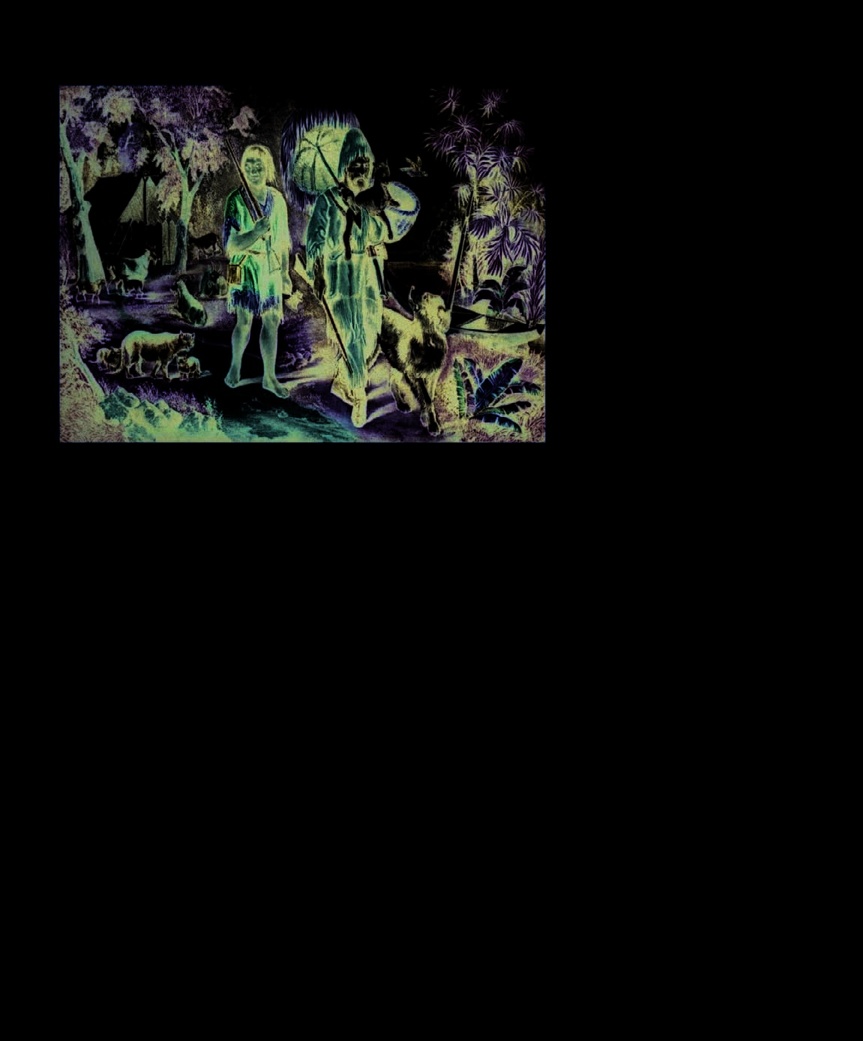The Psychology Book (98 page)
Read The Psychology Book Online
Authors: Unknown

personality-describing words in English.
but the “propriate” striving persisted,
and though he welcomed each
In 1936, Allport and his colleague
of the English language available
success, it simply raised his level
H.S. Odbert proposed that individual
at the time, to find 18,000 words
of aspiration. Having sailed the
differences that are most salient
that described personality. They
Northwest Passage, Amundsen
and socially relevant in people’s
narrowed this down to 4,500
embarked upon the project that led
lives eventually become expressed
adjectives that they considered
to his success in reaching the South
through language; and the more
to be observable and stable
Pole. Then, after years of planning
important the difference, the more
personality traits.
and discouragement, he flew over
likely it is to be expressed as a
the North Pole. His commitment
single word. This idea is known as
Cardinal traits
never wavered, and he eventually
the lexical hypothesis. The two
Based on a further analysis of
died attempting to save the life of a
researchers went on to study the
his lexical study, Allport defined
less experienced explorer.
most comprehensive dictionaries
three distinct categories of traits:
cardinal, common, and secondary.
Less fundamental traits
Cardinal traits are those that are
In contrast to cardinal traits,
fundamental to a person, governing
common traits are general
their entire approach to life. Not
characteristics, such as honesty,
everyone has a cardinal trait,
that are found in most people.
according to Allport, but when they
These are the building blocks that
A man can be
do, they may even be famous for
shape our behavior, but they are
said to have a trait;
them; in fact some people are so
less fundamental than cardinal
but he cannot be
famous for them that their name
traits. Common traits, Allport said,
said to have a type.
becomes a byword for that trait,
develop largely in response to
Gordon Allport
giving us terms such as Byronic,
parental influences, and are a result
Calvinistic, and Machiavellian.
of nurture. They are shared among
On a less iconic scale, a person’s
many people within a culture but in
cardinal trait might be something
varying degrees; aggressiveness,
like “a fear of communism,” where
for instance, is a common trait
this is so central and important to
that varies by degrees. According

PSYCHOLOGY OF DIFFERENCE 311
quite another. This is because our
very angry when tickled” or “she
motives today are not continuously
gets nervous on flights.” These
dependent on the past. We may
traits express preferences or
start learning to draw, for instance,
attitudes that are open to change.
to compete in popularity with
In the absence of another person,
another child in class, but
secondary traits might be present
Any theory that
ultimately become more interested
but quite invisible. Added to
regards personality
in perfecting the craft for its own
the common and cardinal traits,
as stable, fixed, or
sake. This means that how we
they provide a complete picture
invariable is wrong.
think and act today is only
of human complexity.
Gordon Allport
indirectly affected by our past.
Functional autonomy is also
Traits and behavior
thought to explain obsessive and
Allport was interested in how traits
compulsive acts and thoughts: they
are forged in a person, and their
may be manifestations of
connection with behavior. He
functionally autonomous traits,
suggested that a combination of
where someone has no idea why
internal and external forces
to Allport, most of us have
he is doing something, but can’t
influence how we behave. Certain
personalities made up of five
stop himself from doing it.
internal forces, which he called
to ten of these traits at a level
Allport’s third category of traits,
“genotypes,” govern how we retain
whereby they have become our
known as secondary traits, exert
information and use it to interact
“outstanding characteristics.”
much less influence on us than
with the external world. At the
Over time, common traits may
cardinal or common traits. They are
same time, external forces, which
achieve “functional autonomy,” by
only seen in certain circumstances,
he named “phenotypes,” determine
which Allport means that although
because they are determined by
the way individuals accept their
we start doing something for one
context or situation. For instance,
surroundings and how they allow
reason, we may carry on doing it for
we might say of someone “he gets
others to influence their behavior. ❯❯
Genotype traits
are internal,
but phenotype traits are
Person in difficulty
Kindness to others
external—they require
stimuli from the outside
world to make them manifest.
Self-sufficiency
Genotype traits
Phenotype traits
Spider
Gluttony
Fear
Personality
Traits
Irritation
Creative thinking
Rude person

312 GORDON ALLPORT
Robinson Crusoe
, Allport concluded,
must always have had many distinctive
personality traits, but some were only
uncovered by new circumstances after
he was shipwrecked and met Friday.
whom she was friendly. Allport used
these letters for his analysis, asking
36 people to characterize Jenny’s
personality traits from her letters.
Eight trait “clusters” encompassing
198 individual traits were relatively
easy to identify, with broad
agreement from all the people
rating the documents. These traits
were: quarrelsome–suspicious;
self-centered; independent–
autonomous; dramatic–intense;
aesthetic–artistic; aggressive;
cynical–morbid; and sentimental.
However, Allport concluded that
this trait analysis of Jenny was
These two forces, he said, provide
and persistence to teach him to
somewhat inconclusive, and so he
the groundwork for the creation of
speak English, and the capability
went on to use a number of other
individual traits.
to convert him to Christianity.
frameworks, including Freudian
Applying these ideas to the
While Crusoe always had these
and Adlerian analysis. Assisted
story of Robinson Crusoe, Allport
personality traits, they remained
by his students Jeffrey Paige and
saw that, prior to his meeting with
unexpressed on the island until he
Alfred Baldwin, he also applied
Friday, Crusoe’s genotypes, or
formed a relationship with Friday.
“content analysis” to the material.
inner resources, along with some
The idea is similar to a well-known
This was a new form of computerized
phenotype aspects, helped him to
philosophical puzzle: if a tree falls
analysis, where the computer was
survive alone on a desert island. He
down in a forest, and there is
programmed to count the number
had the resilience to overcome his
nobody there, does it make a noise?
of times words or phrases occur
initial despair, and fetched arms,
For Allport, traits make behavior
that are related to a given topic or
tools, and other supplies from the
consistent; they are always there,
emotion. Allport was particularly
ship before it sank. He built a
even if no one is around to evoke
impressed by this new method
fenced-in compound around a cave,
them or witness them in action.
and kept a calendar. He hunted,
grew corn and rice, and learned to
An idiographic study
make pottery and raise goats, and
After the publication of
Personality:
he also adopted a parrot. He read
A Psychological Interpretation
in
the Bible and became religious.
1937, Allport turned his attention to
These activities demonstrated the
the topics of religion, prejudice, and
Personality is far too complex
expression of Crusoe’s genotypical
ethics. But in 1965 he returned to
a thing to be trussed up in a
traits and resulting behaviors.
the subject of personality by
conceptual straight jacket.
However, it was only with the
undertaking an idiographic study
Gordon Allport
arrival of Friday that other aspects
of the personality traits of Jenny
of his phenotypic behaviors could
Masterson, who lived from 1868 to
find expression: he helped Friday
1937. During the last 11 years of her
to escape from his captors; he
life, Jenny wrote 300 personal
named him; he had the patience
letters to a married couple with

PSYCHOLOGY OF DIFFERENCE 313
because of its potential to analyze
idiographic data, confirming his
belief that the idiographic approach
can identify subtleties of an
individual character that trait
questionnaires alone cannot reveal.
Allport urged psychologists
In 1966, Allport published a
to study personality traits
paper entitled
Traits Revisited
and leave character to the
suggesting that the aim of
province of philosophy.
personality study should not be the
Martin Seligman
microanalysis of individual traits,
but the study of the psychic
organization of the whole person.
He stated that his early writings
Gordon Allport
about traits were written in an age